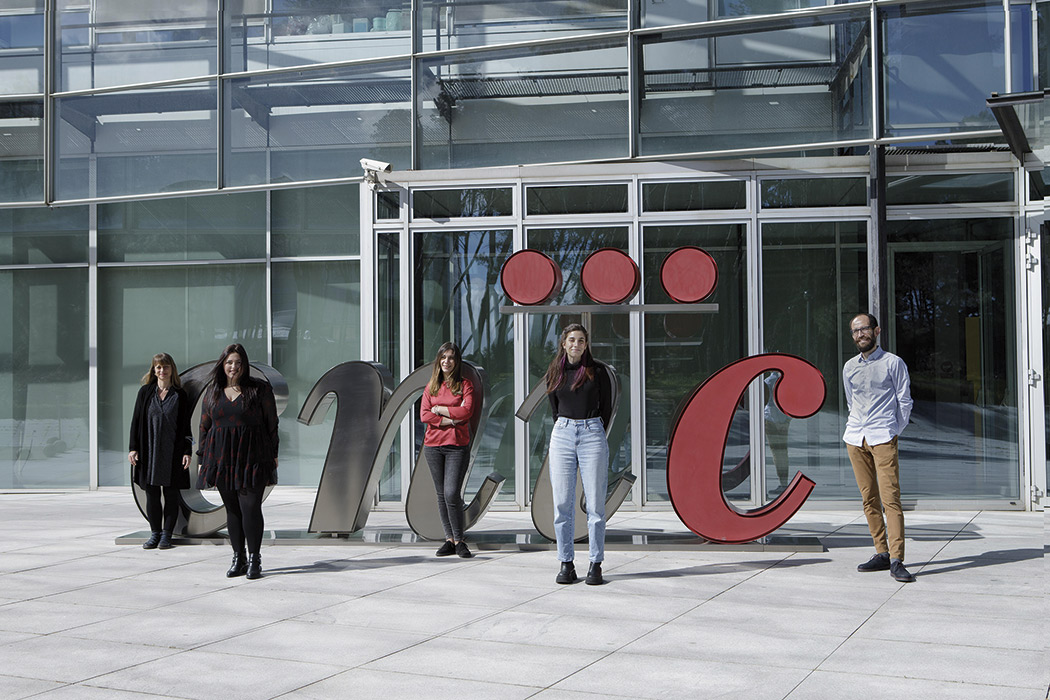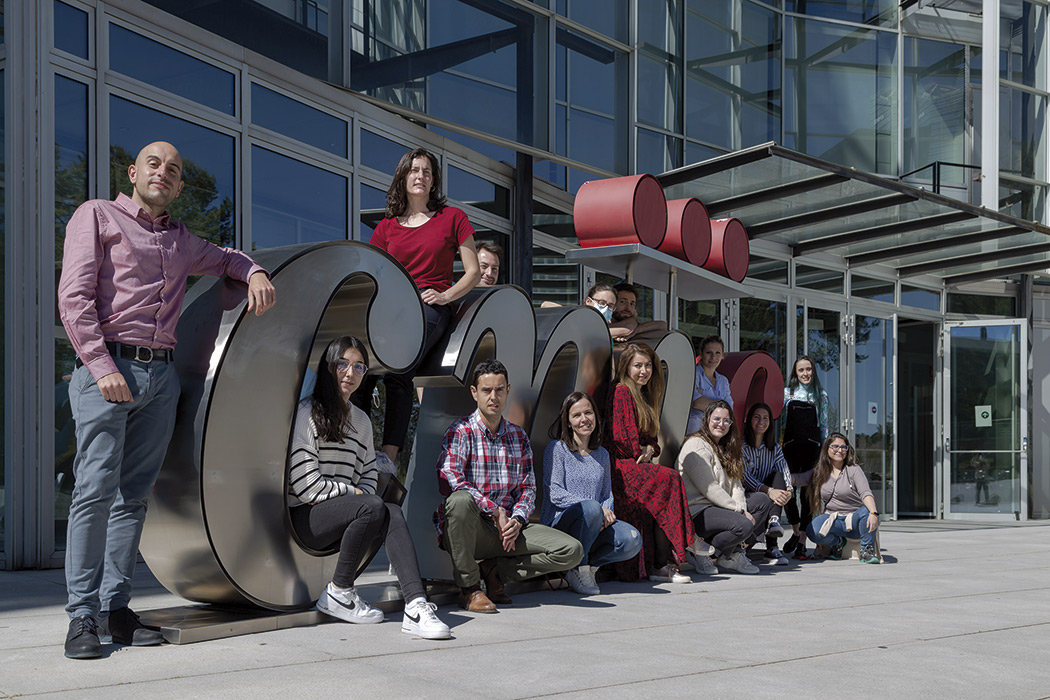Two CNIC projects awarded ERC Consolidator funding in the ERC-2020-COG call for proposals
ProtMechanics-Live is based on Dr. Alegre’s unique experience in protein mechanics and engineering, biophysics, biochemistry, and cardiovascular biology and will for the first time permit investigation of protein mechanics in a physiologically relevant context
Dr. Rui Benedito’s project, AngioUnrestUHD, will develop and apply new research tools and methods to advance knowledge about the biology of blood vessels in distinct physiological and pathological contexts
Two projects from groups at the Centro Nacional de Investigaciones Cardiovasculares (CNIC) have been selected in the European Research Council Consolidator Grant awards for 2020 (ERC-2020-COG). The projects are ProtMechanics-Live: Uncovering Protein Mechanics in Physiology and Disease, led by Dr. Jorge Alegre, and AngioUnrestUHD: Understanding and modulating vascular arrest with ultra-high definition, coordinated by Dr. Rui Benedito. Each will receive €2 million in ERC funding over the next 5 years.
The ERC supports pioneering projects that promise to revolutionize health and society. The ERC’s touchstone for project funding is research excellence. The 2 CNIC projects have been selected within the ERC Consolidator Grant program, which supports young investigators with an established record of leadership but who are still consolidating their research group. The ERC is the first Europe-wide organization to fund basic research projects on the sole basis of a researcher’s scientific excellence and the innovative strength of her or his ideas, independently of nationality or research field.
Understanding protein mechanics in context
The CNIC Molecular Mechanics of the Cardiovascular System group, led by Dr. Jorge Alegre, investigates the fundamental influence of protein mechanics on heart form and function. “ProtMechanics-Live builds on our unique experience in protein mechanics and engineering, biophysics, biochemistry, and cardiovascular biology and will for the first time permit investigation of protein mechanics in a functionally relevant physiological context,” said Dr. Alegre.

While it is no secret that cells and living organisms in general respond to changes in their environment, in the past relatively little attention has been devoted to understanding how living beings respond to the mechanical forces they are continuously exposed to. “This relationship between cells and the mechanical forces acting upon them is immensely important and can explain multiple disease processes, including cancer metastasis, atherosclerosis, and cardiomyopathies currently lacking a defined underlying molecular mechanism,” explained Dr. Alegre.
Indirect approaches have indicated an important role for protein mechanics in these processes. However, the mechanisms involved remain elusive, largely due to the absence of methods to modulate protein mechanics in living systems.
The ProtMechanics-Live project aims to “overcome these technical barriers to scientific progress by establishing the manipulation of proteins in living cells and animals as a new research field,” said Dr. Alegre.

Advances over the past decades have produced new technologies that permit the study of the mechanical behavior of proteins that determines the ability of cells to sense and generate force. These techniques have enabled the characterization of the mechanical properties of individual proteins in isolation. While this has transformed understanding of the relationship between force and biological molecules, these pioneering methods are limited to the study of simplified systems in the laboratory that do not reflect the real situation in living cells and organisms. ProtMechanics-Live will translate this analysis to proteins’ natural environment, the living cell, thus generating knowledge about how protein mechanics integrates with other systems essential for life. This approach has been impossible until now.
This innovative project has three goals. “To overcome the limitations of current methods,” commented Dr. Alegre, “we will first generate genetic loss- and gain-of-function models based on protein engineering to manipulate mechanical function. We will apply these new tools to the giant protein titin, an important node for the generation and detection of force in cardiomyocytes that is implicated in several cardiovascular disorders.”
“Once we have generated these tools, we will use them to define how perturbations in titin mechanics affect the function of healthy and diseased cardiomyocytes,” Dr. Alegre continued. The third project goal is for these studies to “shed light on the contribution of titin mechanics to the initiation and progression of cardiomyopathies, both those with a genetic cause and those arising after an event such as a myocardial infarction.”
In the ERC evaluation report on ProtMechanics-Live, the international panel of experts emphasized that they were “impressed by the quality of the proposal, which was considered to be highly original.”
The biology of blood vessels
Dr. Rui Benedito’s project is called “AngioUnrestUHD: Understanding and modulating vascular arrest with ultra-high definition.” The project will use new research tools and methods developed by Dr. Beneditos’ group to advance understanding of the biology of blood vessels in different physiological and pathological contexts. “This knowledge will help to identify improved strategies to promote vessel development in ischemic heart disease, cure vascular malformations, and inhibit angiogenesis in tumors,” explained Dr. Benedito, head of the Molecular Genetics of Angiogenesis group at the CNIC.
Therapeutic modulation of the proliferation and migration of vascular cells is essential for the efficient blockade of angiogenesis in cancer and for its induction to treat cardiovascular disease.
The previously accepted view was that increased levels of growth factors or mitogenic stimuli will promote angiogenesis by increasing both the proliferation and migration of endothelial cells.
“Through innovative genetic and imaging studies, we have identified a previously unknown mechanism whereby a highly mitogenic environment (stimulating cell division) can lead to the inhibition of angiogenesis and the arrest of the cell cycle in endothelial cells, thus reducing the efficiency of angiogenesis,” said Dr. Benedito.
This context-dependent mechanism “can explain the failure of growth factor therapy to promote functional angiogenesis in ischemic heart disease.”
The new project aims to define how hypermitogenic stimulation arrests angiogenesis and to identify ways to intervene in this process to efficiently stimulate the formation of new blood vessels.
Dr. Benedito’s group has exploited recent advances in DNA synthesis, CRSPR gene editing, microscopy, and cell-lineage tracking technologies to develop new genetic tools, animal models, and methods of wide applicability that are enabling a more precise and high resolution study of gene function.


















